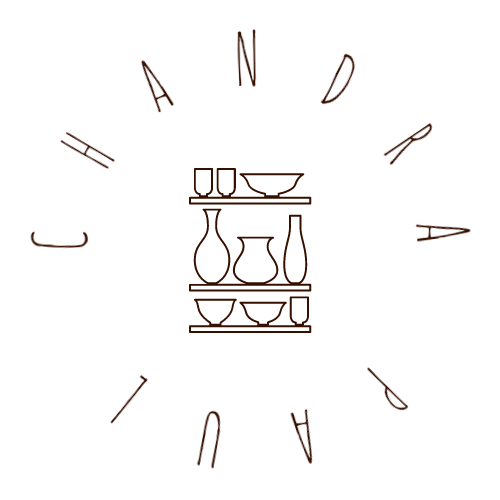Wild Clay Moon Jar - They Said She Was Like The Moon
Coil built, stoneware vessel made out of a mix of local wild clays, an earthenware clay I dug out of Creswick Clay Pit mixed with kaolin from Pittong quarry and sand I collected from around Lake Burrumbeet with a Pittong kaolin slip under a calcium and magnesium white matte glaze.
The form is inspired by the Korean moon jar, traditionally thrown in two hemispherical halves and fired rim to rim. A forgiving technique which creates a feature out of imperfections within the form, such as the visibility of the join and warping during the firing which prevents it from being circular. The philosophy, similar to the philosophy of Wabi Sabi, teaches me to value imperfections in my life and myself because they make me who I am.
The title is a reference to a couple of lines in a short story one of the tenants who lived in a bungalow in the back of our garden wrote about our family when I was a kid. We were isolated from all the friends we once had by my mother’s second husband and segregated from life outside of his fundamentalist sect. My mother was deeply narcissistic and so I never developed an image of myself which was positive and I think that’s why this story made such a strong impression.
“Chandra, who loves to sing, for all say she has a fine voice, and knows how to play the violin. Do you know what Chandra means? Chandra, in a far away language, in another tongue, different from your own, called Sanskrit, means - “moon”, and all used to say that Chandra was truly like the moon - pale, brilliant, radiant, alone, and majestic, and how correct they were, for once.”
Approximately 32 cm (h) x 28 cm (w)
Coil built, stoneware vessel made out of a mix of local wild clays, an earthenware clay I dug out of Creswick Clay Pit mixed with kaolin from Pittong quarry and sand I collected from around Lake Burrumbeet with a Pittong kaolin slip under a calcium and magnesium white matte glaze.
The form is inspired by the Korean moon jar, traditionally thrown in two hemispherical halves and fired rim to rim. A forgiving technique which creates a feature out of imperfections within the form, such as the visibility of the join and warping during the firing which prevents it from being circular. The philosophy, similar to the philosophy of Wabi Sabi, teaches me to value imperfections in my life and myself because they make me who I am.
The title is a reference to a couple of lines in a short story one of the tenants who lived in a bungalow in the back of our garden wrote about our family when I was a kid. We were isolated from all the friends we once had by my mother’s second husband and segregated from life outside of his fundamentalist sect. My mother was deeply narcissistic and so I never developed an image of myself which was positive and I think that’s why this story made such a strong impression.
“Chandra, who loves to sing, for all say she has a fine voice, and knows how to play the violin. Do you know what Chandra means? Chandra, in a far away language, in another tongue, different from your own, called Sanskrit, means - “moon”, and all used to say that Chandra was truly like the moon - pale, brilliant, radiant, alone, and majestic, and how correct they were, for once.”
Approximately 32 cm (h) x 28 cm (w)
Coil built, stoneware vessel made out of a mix of local wild clays, an earthenware clay I dug out of Creswick Clay Pit mixed with kaolin from Pittong quarry and sand I collected from around Lake Burrumbeet with a Pittong kaolin slip under a calcium and magnesium white matte glaze.
The form is inspired by the Korean moon jar, traditionally thrown in two hemispherical halves and fired rim to rim. A forgiving technique which creates a feature out of imperfections within the form, such as the visibility of the join and warping during the firing which prevents it from being circular. The philosophy, similar to the philosophy of Wabi Sabi, teaches me to value imperfections in my life and myself because they make me who I am.
The title is a reference to a couple of lines in a short story one of the tenants who lived in a bungalow in the back of our garden wrote about our family when I was a kid. We were isolated from all the friends we once had by my mother’s second husband and segregated from life outside of his fundamentalist sect. My mother was deeply narcissistic and so I never developed an image of myself which was positive and I think that’s why this story made such a strong impression.
“Chandra, who loves to sing, for all say she has a fine voice, and knows how to play the violin. Do you know what Chandra means? Chandra, in a far away language, in another tongue, different from your own, called Sanskrit, means - “moon”, and all used to say that Chandra was truly like the moon - pale, brilliant, radiant, alone, and majestic, and how correct they were, for once.”
Approximately 32 cm (h) x 28 cm (w)









